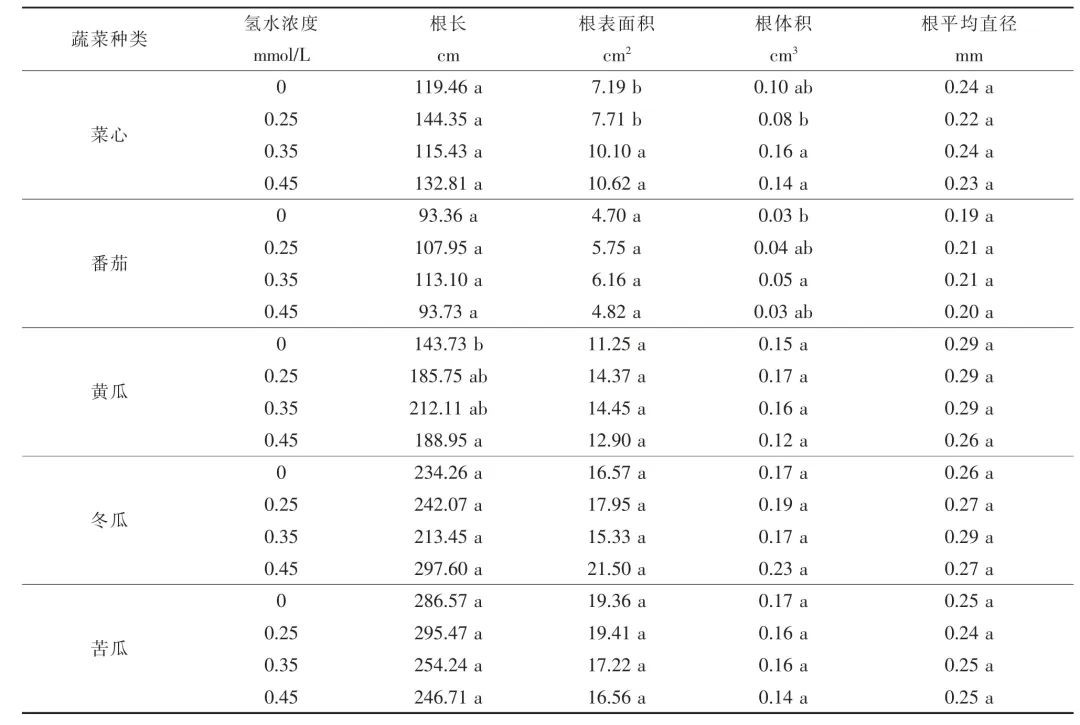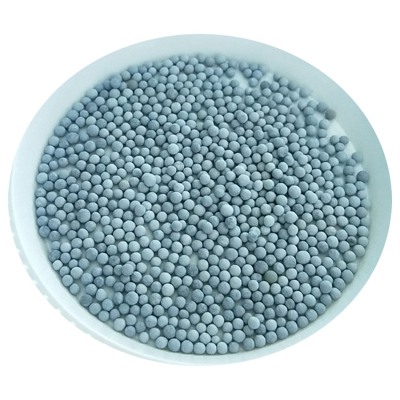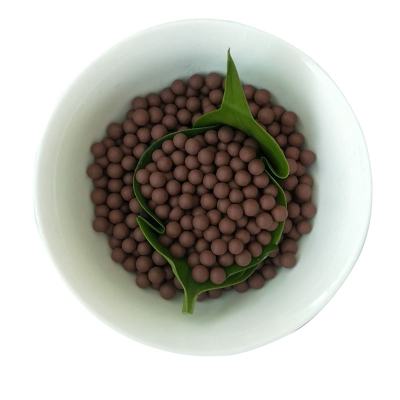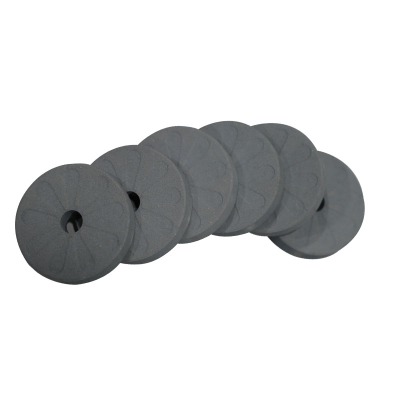Effects of hydrogen water on the growth of vegetable seeds and seedlings
Effects of hydrogen water on the growth of vegetable seeds and seedlings——from'Hydrogen and agriculture'(2024.03.28)
The Impact of Different Concentrations of hydrogen water on the Germination of Vegetable Seeds
As shown in Tables 1 and 2, the germination vigor and germination rate of cabbage heart, tomato, cucumber, winter melon seeds all showed a trend of initially increasing and then decreasing with the increase in the concentration of hydrogen water. Among them, the germination vigor and germination rate of cabbage heart seeds were the highest under the treatment of 0.35 mmol/L hydrogen water, increasing by 15.91% and 8.64% respectively compared to pure water treatment. The germination vigor and germination rate of tomato, cucumber, and winter melon seeds were highest under the treatment of 0.25 mmol/L hydrogen water, with increases compared to pure water treatment of 13.5%, 11.6%, and 12.0% in germination vigor, and 6.4%, 4.8%, and 5.3% in germination rate respectively. When the concentration of hydrogen water was 0.45 mmol/L, the germination of cabbage heart, tomato, cucumber, and winter melon seeds were all inhibited to varying degrees compared to pure water treatment. Compared to pure water treatment, the germination vigor decreased by 16.2%, 22.8%, 24.2%, and 2.0% respectively, and the germination rate decreased by 15.3%, 20.9%, 23.0%, and 2.6% respectively. There was no significant difference in the germination vigor and germination rate of bitter gourd seeds under pure water and different concentrations of hydrogen water treatments.
Table 1: The Impact of Different Concentrations of hydrogen water on the Germination Vigor of 5 Types of Vegetable Seeds (%)
Table 2: The Impact of Different Concentrations of hydrogen water on the Germination Rate of 5 Types of Vegetable Seeds (%)
Table 3: The Impact of Different Concentrations of hydrogen water on the Biomass of 5 Types of Vegetables (g)
The Effect of Different Concentrations of hydrogen water on the Leaf Growth of Vegetables
As shown in Tables 4 and 5, the leaf fresh weight and leaf area of cabbage heart, tomato, cucumber, and winter melon seedlings all showed a trend of initially increasing and then decreasing with the increase in the concentration of hydrogen water. Comprehensive analysis of leaf fresh weight and leaf area showed that the leaves of cabbage heart and winter melon grew best under the treatment of 0.25 mmol/L hydrogen water, with increases of 8.61% and 29.18% respectively in leaf fresh weight compared to pure water treatment. The leaves of tomato and cucumber grew best under the treatment of 0.35 mmol/L hydrogen water, with increases of 46.32% and 16.02% respectively in leaf fresh weight compared to pure water treatment, and increases of 37.69% and 23.17% respectively in leaf area. There was no significant effect of different concentrations of hydrogen water treatment on the growth of bitter gourd seedlings, and there was no significant difference compared to pure water treatment.
Table 4: The Impact of Different Concentrations of hydrogen water on the Leaf Fresh Weight of 5 Types of Vegetables (g)
Table 5: The Impact of Different Concentrations of hydrogen water on the Leaf Area of 5 Types of Vegetables (mm2)
The Effect of Different Concentrations of hydrogen water on Root Indicators of Vegetables
Table 6: The Impact of Different Concentrations of hydrogen water on the Root Fresh Weight of 5 Types of Vegetables (g)
Table 7:Effects of different concentrations of hydrogen water on the root systems of five types of vegetables
As shown in Tables 6 and 7, the root fresh weight of cabbage heart, tomato, and cucumber showed a trend of initially increasing and then decreasing with the increase in the concentration of hydrogen water. The root fresh weight and root length of cabbage heart reached their maximum values when the concentration of hydrogen water was 0.25 mmol/L, with increases of 26.7% and 20.8% respectively compared to the control group. The root fresh weight, root length, root surface area, and root volume of tomato and cucumber reached their maximum values when the concentration of hydrogen water was 0.35 mmol/L. Under this concentration, the root fresh weight, root length, root surface area, and root volume of tomato increased by 35.56%, 21.14%, 31.06%, and 66.67% respectively compared to the control group, and the root fresh weight, root length, and root surface area of cucumber increased by 30.77%, 47.57%, and 28.43% respectively. The treatment with 0.25 mmol/L hydrogen water increased the root fresh weight of winter melon significantly by 37.73% compared to pure water treatment, but there was no significant effect of different concentrations of hydrogen water treatment on the root length, root surface area, root volume, and root average diameter of winter melon. There was no significant effect of different concentrations of hydrogen water treatment on the growth of bitter gourd roots.
Discussion and Conclusion
In this study, hydrogen water significantly increased the germination rate of cabbage heart, tomato, cucumber, and winter melon seeds, consistent with the results reported by Ding Fangfang et al., who found that hydrogen water promotes the germination of Angelica sinensis seeds. This may be because hydrogen water can regulate the activity of enzymes related to seed germination and thus affect seed germination. Tian Jingyun et al. found in maize seedling growth experiments that hydrogen water can promote photosynthesis in maize seedlings and reduce the inhibition of seedling growth by salt stress. In this study, hydrogen water treatment significantly increased the leaf area and leaf fresh weight of cabbage heart, tomato, cucumber, and winter melon seedlings, indicating that hydrogen water may promote leaf growth, increase photosynthesis in seedlings, and thereby promote the accumulation of plant biomass. The effect of hydrogen water treatment on bitter gourd seedlings was not significant, possibly because bitter gourd seeds have relatively thick seed coats, and the concentration of hydrogen water under this experimental condition is not sufficient to produce effects. It is suggested to increase the concentration of hydrogen water for bitter gourd-related experiments in the future.
In this study, the germination and seedling growth of cabbage heart, tomato, cucumber, and winter melon seeds all showed a trend of initially increasing and then decreasing with the increase in the concentration of hydrogen water, indicating that excessively high concentrations of hydrogen water can inhibit seedling growth. Song Yunqiong et al. also pointed out that appropriate concentrations of hydrogen water irrigation can promote the growth of Argyranthemum frutescens bulbs and flower stems, but excessively high concentrations of hydrogen water can reduce the promoting effect, consistent with the results of this study, indicating that hydrogen water has a significant dose-effect relationship on plant growth. This may be because hydrogen water is involved in related hormone signaling or hormone metabolism, thereby affecting plant growth.
The optimal hydrogen water concentration is different for different vegetables, and the optimal hydrogen water concentration at the seed germination and seedling stages of the same vegetable is also different. In previous studies, the optimal hydrogen water concentration for plants was mostly 50% of saturated hydrogen water (50% HRW). However, due to different hydrogen production methods, the actual dissolved hydrogen concentration of 50% HRW may be 0.20 to 0.35 mmol/L. In this study, except for the optimal concentration of winter melon seeds and seedlings, which are both 0.25 mmol/L, the optimal hydrogen water concentration of cabbage is 0.35 mmol/L in the seed stage, but is reduced to 0.25 mmol/L in the seedling stage. L; Contrary to cabbage, the optimal concentration of hydrogen water for tomatoes and cucumbers is 0.25 mmol/L at the seed stage, but increases to 0.35 mmol/L at the seedling stage. This shows that the effect of hydrogen water is not only related to vegetables. It is related to the type and the growth period of the vegetables.
There are differences in the effect of hydrogen water on different vegetables and the same kind of vegetables at different stages: the optimal concentration of hydrogen water for cabbage seeds is 0.35 mmol/L, and the optimal concentration for seedlings is 0.25 mmol/L; the optimal hydrogen water concentration for tomato and cucumber seeds is 0.35 mmol/L. The hydrogen water concentration is 0.25 mmol/L, and the optimal concentration for seedlings is 0.35 mmol/L; the optimal hydrogen water concentration for winter melon seeds and seedlings is 0.25 mmol/L; the hydrogen water concentration for bitter gourd seeds and seedlings in this test is The effect is not obvious. It can be seen that if you want to make better use of hydrogen water in actual production, you need to ensure the appropriate hydrogen water concentration and appropriate vegetable varieties to ensure gains.











